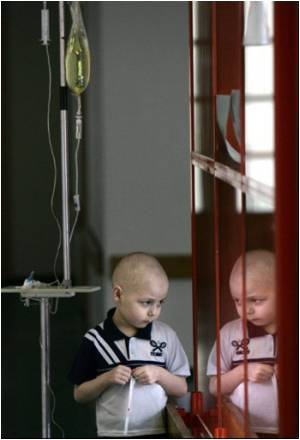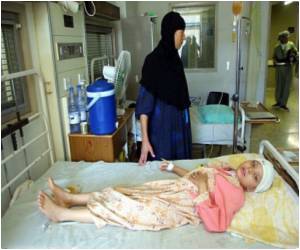According to new research more children are surviving cancer in Britain than ever before. The research was published in the cancer journal Annals of Oncology [1] today (Wednesday).

Charles Stiller, Registry Director at the Childhood Cancer Research Group, University of Oxford (UK) and first author of the study, said: "The results of our study show that improvements in childhood cancer survival match those reported by the relevant clinical trials that were running between 1978 and 2005. During this time there has been an increasing level of participation in trials, with around 90% of all children with many types of cancer enrolled, and this has been facilitated by the organisation of care into specialist children's cancer units. These developments have underpinned the substantial improvements in survival seen at the population level – in other words, among a large, unselected group of all children with cancer in Britain.
"Although trends in childhood cancer survival have been reported in relation to improvements in treatment in the UK and elsewhere, this is the first time that population-based survival has been examined in relation to the clinical trials open to entry at the time."
Mr Stiller and his colleagues analysed data on 25,853 children (66% of all registered childhood cancers) diagnosed before the age of 15 in Britain during 1978-2005. In total there were 39,067 children with cancer, but this study focused on the two-thirds for whom there was a multi-centre trial of first-line treatment open to entry during a total of at least 10 years within the period of the study.
For each diagnostic category, there was an annual reduction in the risk of death that ranged from 2.7% for rhabdomyosarcoma (a cancer of soft tissues such as muscle) to 12% for germ cell tumours of the testes and ovaries. The percentage of children enrolled in trials varied widely between different cancers and at different times during the study period, but there was a tendency for entry rates to be higher in more recent times for most cancers.
"Examples of cancers where a really big difference was seen over the study period are acute lymphoblastic leukaemia (ALL) and hepatoblastoma," said Mr Stiller. "ALL is the most frequent cancer in children. In 1978 only 49% of children survived for five years, but survival increased steadily throughout the study period and from each trial era to the next. By the end of this study, 90% of children were surviving five years from diagnosis and most of them could be considered cured.
Advertisement
Kathy Pritchard-Jones, Professor of Paediatric Oncology at the Institute of Child Health, University College London and Great Ormond Street Hospital for Children NHS Trust (London, UK), another author of the study, said: "The key message from this study is that clinical trials are good for you if you are a cancer patient. Taking part in clinical trials is considered best practice for most newly diagnosed childhood cancers now. This study shows how the increase in the proportion of children taking part in trials has gone hand in hand with improvements in survival. It also emphasises the importance of doctors working together to take the leadership role to make sure clinical trials and access to new treatments are available for children with cancer. Despite initiatives at a European level to incentivise the pharmaceutical industry, they still have a very poor track record in initiating or supporting clinical trials that could benefit children with cancer.
Advertisement
The authors say they found no evidence that the absence of a trial resulted in a worsening of survival for children with those cancers, but the periods without an open trial between 1978-2005 were short, resulting in too few patients for formal comparisons. "Since the implementation of the EU Clinical Trials Directive in 2004, comprehensive trial portfolios are no longer available and intervals between trials have increased. As data for recent years mature, it will be important to investigate the effects on survival from childhood cancer at the population level in relation to trial entry, to address the important question of whether patients who participate in clinical trials have better outcomes than those who do not," conclude the authors in their paper. The Childhood Cancer Research Group will continue to monitor survival at population level.
Prof Pritchard-Jones said: "If no trial is available it may not have an immediate effect on survival. However, if that situation were to persist for many years, one would predict that the rate of improvement of survival would cease and children in the UK would no longer be receiving 'cutting edge' treatment at the international forefront of innovative thinking. There is still a great need for this in many, if not all childhood cancers, due to the toxicity of the treatment, its propensity to cause side effects later in life, and the fact that we still don't cure everyone."
Source-Eurekalert













